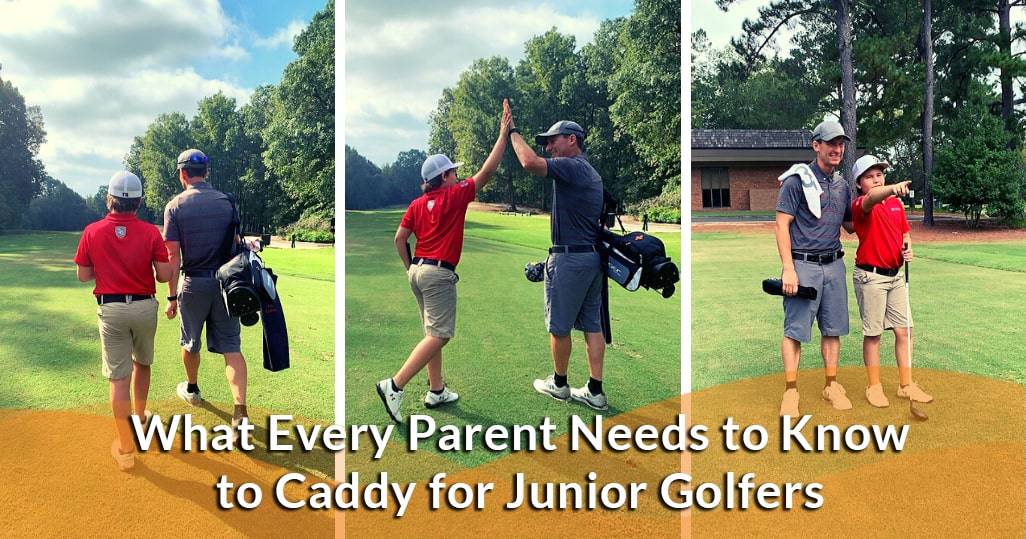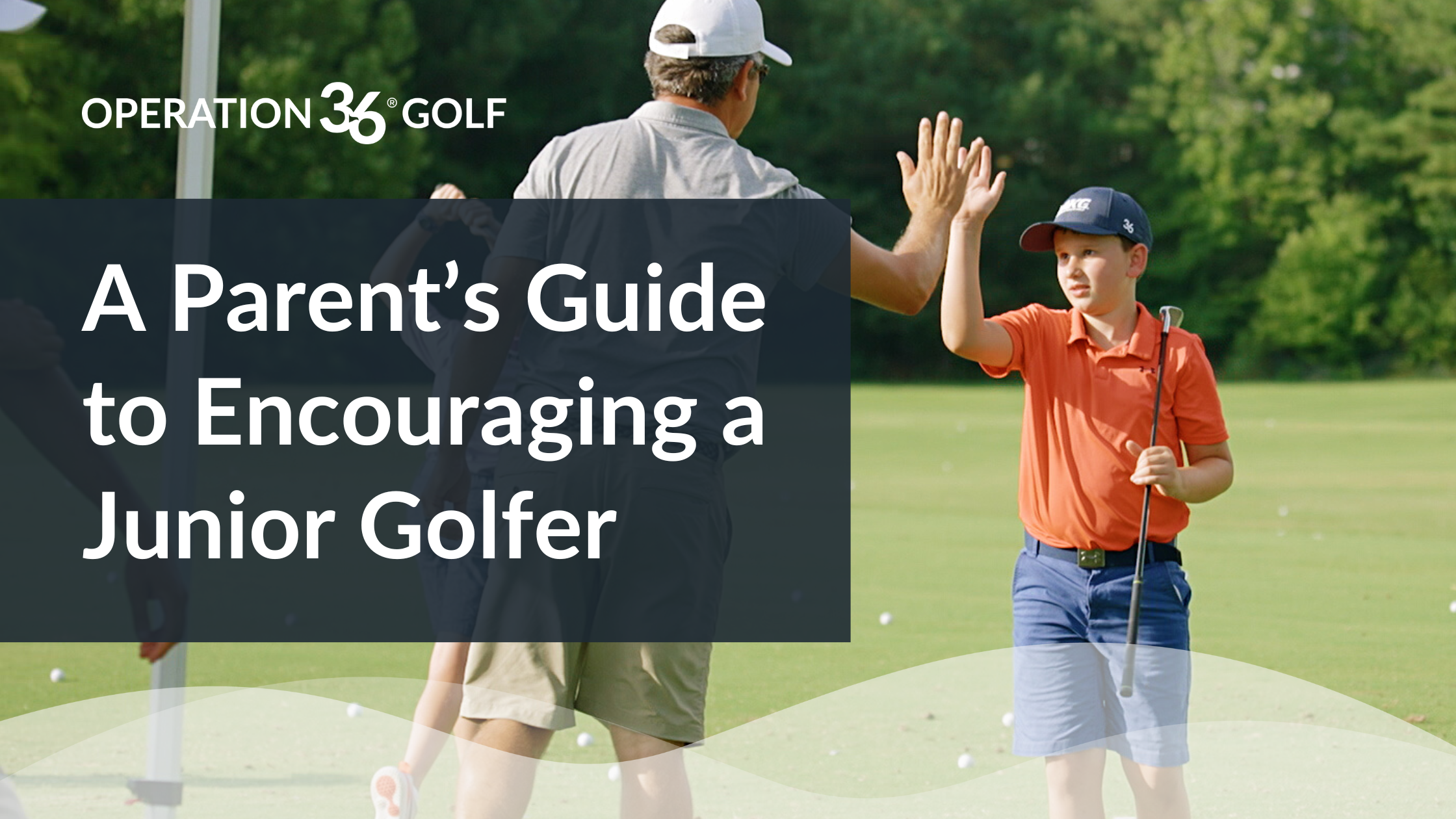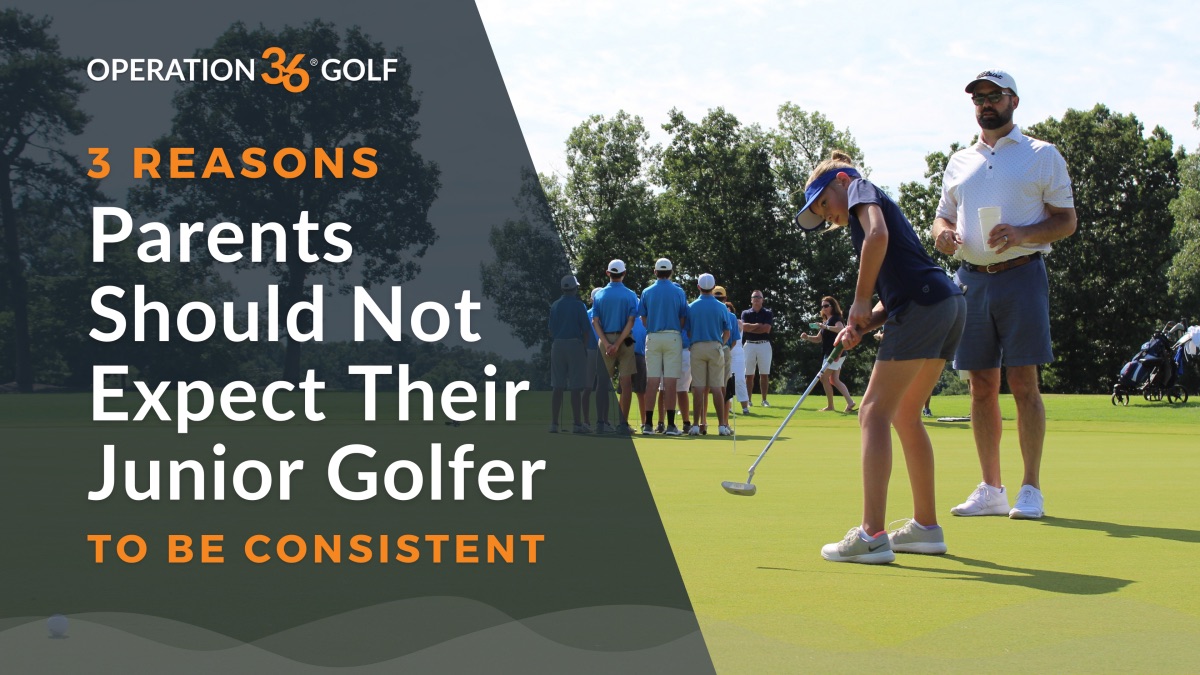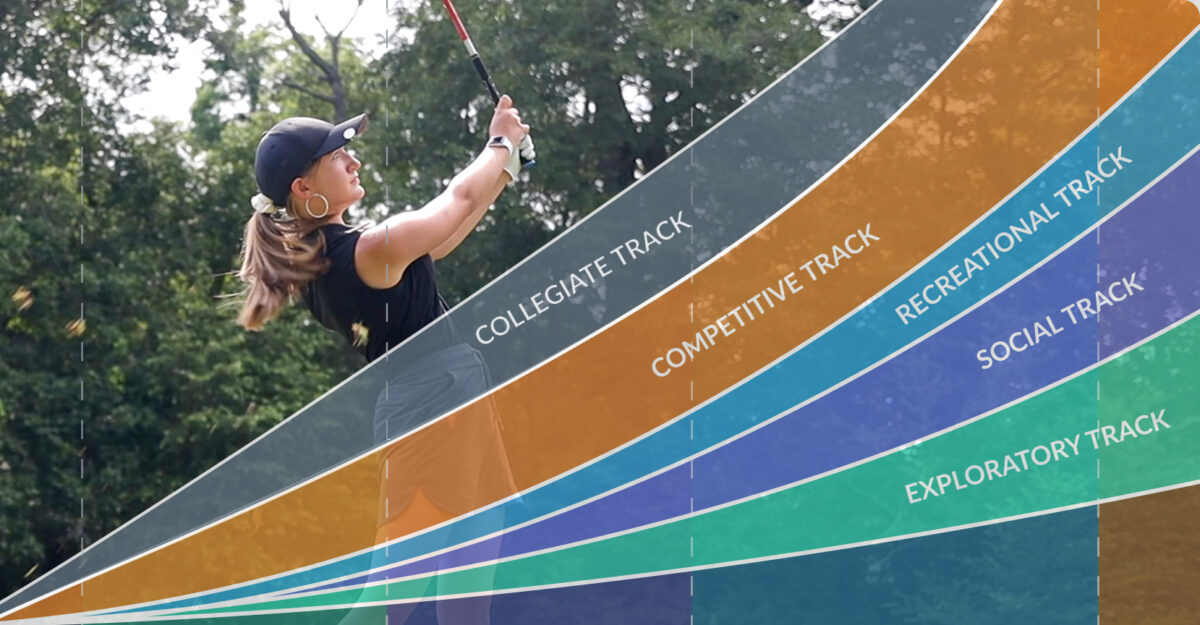
As a parent, the happiest times of our day, week or year is when we get to spend quality time with our children. The problem is that when life gets in the way, it gets harder and harder to find time to do this. Fortunately, the game of golf provides a perfect opportunity for us to spend one-on-one time with our child on the golf course as a caddy.
For those new to golf and not familiar with the term caddy, it is a person who assists a player during a round of golf. In junior golf events around the world, most of the time it is the parents who caddy for their children.
In caddying for my own kids over the years, it has been an experience much different than other youth sports and activities that they participated in such as baseball, basketball, soccer, karate, swimming, gymnastics, dance or playing an instrument.
As a caddy, you are on the playing field (golf course) with your child. It would be a bit odd to see a Dad dancing next to his daughter while she was performing a dance routine, or a Mom running the base paths with her 10-year-old in a baseball game or swimming in the pool lane with your child while they are competing at the swim meet.
But in golf, if you are caddying, you’re walking side by side with your child the entire time. You have an up-close ticket to the event. Being that close to the action means you have greater influence during the event, which makes it very important that you say and do things that help your player and not to accidentally discourage your child.
Granted, I’ve made plenty of mistakes myself when caddying over the years! I’ve said the wrong thing at the wrong time when caddying for my son that made the situation worse rather than better. I’ve watched other parents say and do things that have caused kids to quit the game of golf. I don’t want you to make the same mistakes and go through that experience!
After seeing and doing the wrong things as a caddy, I’ve learned some great lessons. As a parent, I am going to ask you to take your PARENT hat off when you caddy and put your CADDY hat on. If you need to, create a physical trigger to help you make the mindset switch. I’ve seen some parents literally do this by wearing a specific blue hat to caddy. They have told me that when they put the blue hat on, that signals to them that they are a Caddy for the round, not the Parent.
We could probably write an entire book on this subject! But here are 3 tips to get you started:
Nothing will ruin an experience for a junior golfer faster than a parent taking ownership of the activity and imposing their expectations on the child. Please don’t live vicariously through your child, let them own their experience!
For some of our players, they are still learning how to write legibly. Yes, they are still learning how to write! To expect them to consistently perform a skill such as putting at a level of a professional golfer on TV or an adult is unrealistic.
They don’t have the fine motor skills yet. Instead of expecting them to 2 or 3-putt (YOUR EXPECTATION), know that they will most likely 3-putt and sometimes take more putts (4, 5 or 6+ putts) to get it in the hole. Remember, they are using the same size golf ball as the adults/professionals and the same size golf hole. With that in mind, it may help you to be more encouraging and supportive when they do have a tough hole or round. It’s normal and part of the improvement process.
If you learn only ONE thing from this article:
YOUR REACTION AFTER EACH SHOT, HOLE, AND ROUND HAS A MASSIVE IMPACT ON THE LEVEL OF ENJOYMENT YOU AND YOUR CHILD WILL EXPERIENCE.
Please know that all of us as parents need to constantly be working on how we are going to react. It’s not easy, but just like actors in a movie or play, we need to plan out how we are going to react. If we don’t, our instincts as PARENTS will take over and sometimes that doesn’t lead to the healthiest experience during a sporting event.
With that in mind…
If they hit a good shot or hit a poor shot, make it a priority for you to have a similar reaction. That reaction should be very minimal both verbally and physically. If you have a huge celebration for a good shot, what will the player think when they hit a poor shot?
They will think they have let you down. Letting down your parents is one of the strongest negative emotions a child can feel. They want to avoid this at all costs. If they think they let you down, this starts a spiral of emotions that usually ends up with a player getting nervous, anxious and not being able to recover emotionally.
PRO TIP: I make it a game when I am caddying for my son to see if I can react the same way on all shots. Whether he hits a great drive that sails down the middle of the fairway or hits one that clanks around in the trees, I react the same way. I pick up the bag, start walking to the next shot and if he wants to talk about the shot he is going to be the one to bring it up, not me. Is it easy to say nothing and have minimal physical reactions to shots? No, if it was easy everyone would do it. You never get too high and you never get too low.
I highly recommend you say this prior to and after each round with your child. Here is how my conversation with my son goes when we are walking to the 1st tee now, “I want you to know that no matter what happens today, both good and bad, I am still going to support you and love you. I love being here with you and watching you play.”
Once you say that to your child, you can see the shoulders relax and a burden lifted from them. In their minds, they think they have to be perfect to get our approval as parents. However, when you frame it to them that no matter what happens today, I will still love and support you, they can relax and enjoy the day more.
They put enough pressure on themselves to perform well in front of the other players, parents, and coaches that they don’t need added pressure from their own parents.
Pro Tip: You don’t have to play golf or even know how to play golf to be a successful caddy. Some of the best caddies we have observed over the years, don’t play golf at all. Since they don’t play golf, they focus solely on encouraging and supporting their child and that ends up being much more effective than a caddy telling the child what club to hit and what shots they didn’t hit well. More on that later...
Caddying is not easy. You will make mistakes and say or do things that you regret. We all do. You will notice other caddies doing some things that might not be the most productive for the child. Commit to always learning and improving and in no time you will create an environment that your child looks forward to every time you Caddy.
If you enroll your child in an Operation 36 golf program you will have the opportunity to caddy for them in the local 9-hole matches that are run at your facility on a regular basis. Operation 36 is specifically designed to introduce and progress beginners in playing the game of golf. Your child will be encouraged to play right away and it would be great if you were ready to jump right in and help Caddy. Use the above tips to get you started and lean on your Operation 36 coach for additional tips and advice to enjoy this wonderful journey alongside your child.
Additional articles to assist and equip parents:
http://www.thepostgame.com/blog/more-family-fun/201202/what-makes-nightmare-sports-parent
https://www.huffpost.com/entry/six-words-you-should-say-today_b_3863643
https://isport360.com/all-you-have-to-say-i-love-to-watch-you-play/
https://changingthegameproject.com/the-ride-home-after-the-game/


